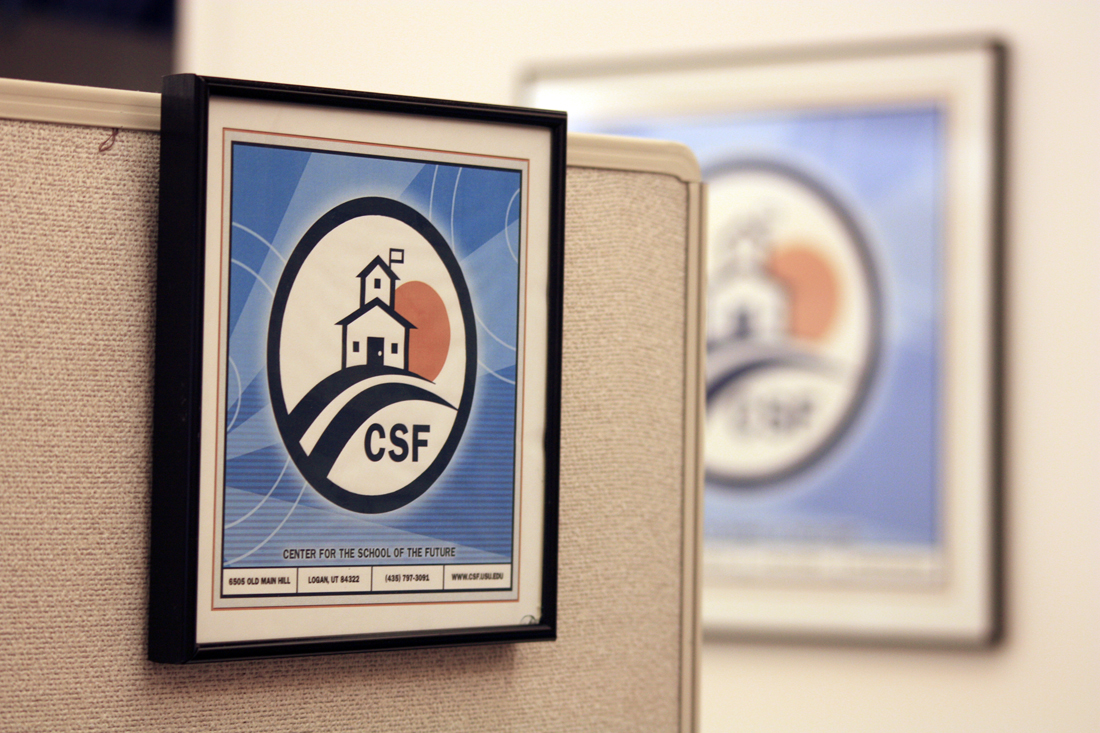Getting ready for the future of academics
Upon hearing the phrase “Center for the School of the Future,” one may think of whirring, hovering school buses and space-age chalkboards. In reality, the Center for the School of the Future (CSF) is a research center tucked away in a quiet corner of campus.
According to the CSF website, the center is “dedicated to improving the quality and effectiveness of education by identifying effective educational practices” and then employing these practices in schools.
Richard West, executive director of CSF, says the Center is “a variety of tools and procedures to help schools evaluate how effectively they are meeting their charge to provide a quality education.”
“The Center helps schools to assess and consult,” said Matthew Taylor, director of research and evaluation at the Center.
The CSF works with anywhere between 1,600 to 1,800 schools, processing and assessing important educational outcome, such as how children learn and how they can learn better.
“Our mission was to enter into partnerships with public school interests and we have been working together to improve the quality of education for over 10 years,” West said.
Financed by ongoing federal funding since 1999, West said that the CSF is “more than just a project. It is a fully franchised research center on campus.”
The CSF is working on an education project called Project Learn. The project takes on finding the trust lands around the nation and putting them to better use.
“It is bigger than even a Utah project,” said Kim Campbell, project coordinator.
“Our founding fathers gave us land to be put in the trust of children,” West said. These lands are also known as trust school lands. They were meant for schools to be built upon, but the problem now is that they have been lost or taken over.
“There was a point when no one knew where the lands were,” Taylor said. “Then there was a movement to recover the lands.”
Some lands were found but were not being used well, and Project Learn helps the states manage the land resource better, and also use the resource as efficiently as possible. They aim to use these lands for the purposes they were intended: to build schools and aid in the efficiency of these schools.
“Project Learn is a good example of using congressional money to spend a dime and earn a dollar,” Taylor said.
According to West, the Center for the School of the Future has also launched a series of projects on improving the leadership in schools with what they call “professional learning communities.”
West also said the CSF looks at three “Indicators of School Quality,” which are based upon leadership, community and teachers. The Center develops tools and resources for professional learning communities, which revolve around teachers, and school community councils, that involve parents and families.
Along with the school leadership, teachers and community members working closely to make sure that they are making a difference. West said the questions they ask are, “Are we making a difference?” and “How do we do a better job?”
“People learn better when they learn with other folks,” said West, and in the leadership learning communities, leaders learn to work together. The Center for the School of the Future then looks at the community practice to see if it is making the difference that it should, like overall increase in achievement or increased attendance.
The CSF then gives the schools different tools and resources to help improve school quality and the tools are “all based on collaboration and data-based decision making,” West said.
“The whole idea is to focus on not only school wide improvement, but individuals as well,” Campbell said.
The CSF also runs international programs to influence practices and strive to make instructional materials more culturally relevant around the world. They have international communities in Guatemala and other places, and an exchange program with Brazil.
Campbell said they have some areas of focus on delinquency prevention that focus on the needs of kids at risk. A few schools around the state are working with the center to “strengthen their programs for the kids who are most at risk,” Campbell said.
“The tools we develop help teachers to answer questions like how to work with the most at risk kids,” Campbell said.
– nikki.lives6@aggiemail.usu.edu

